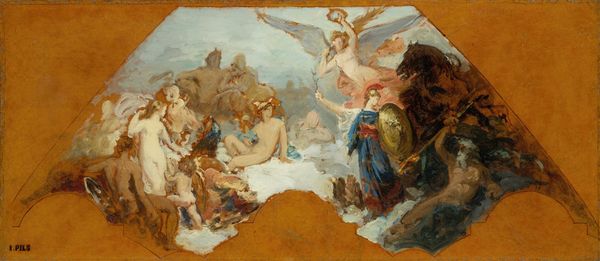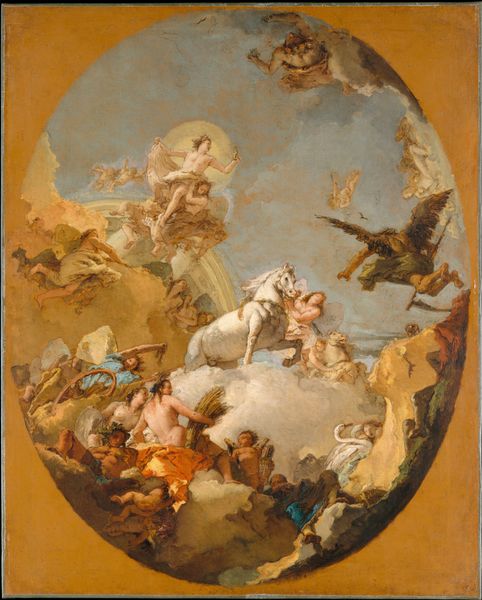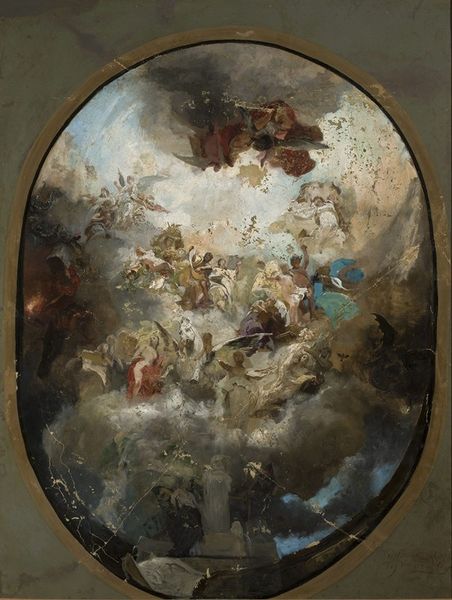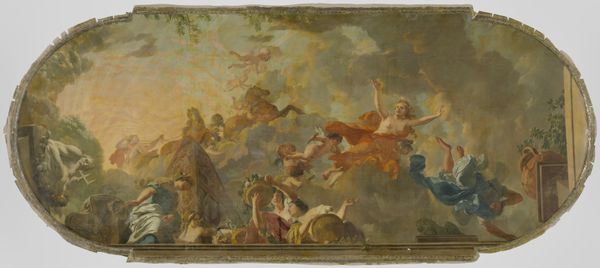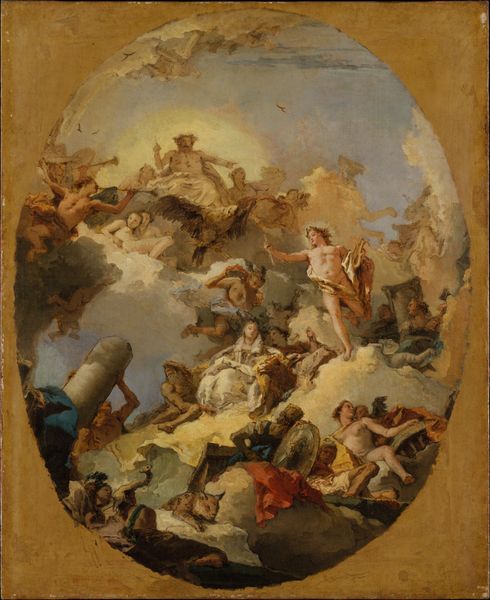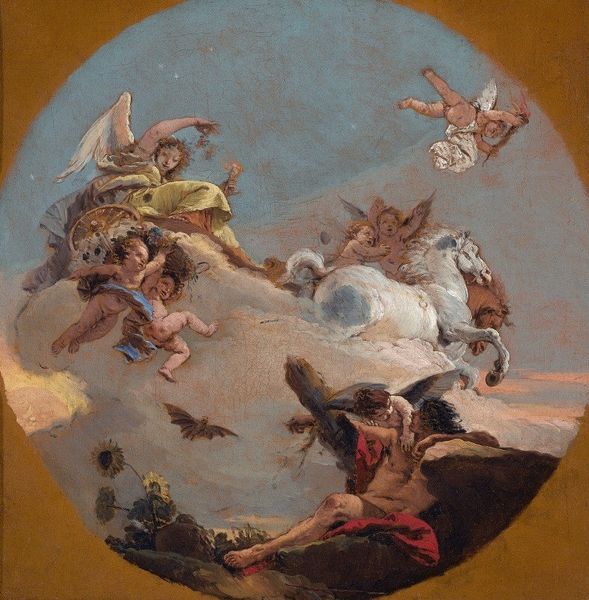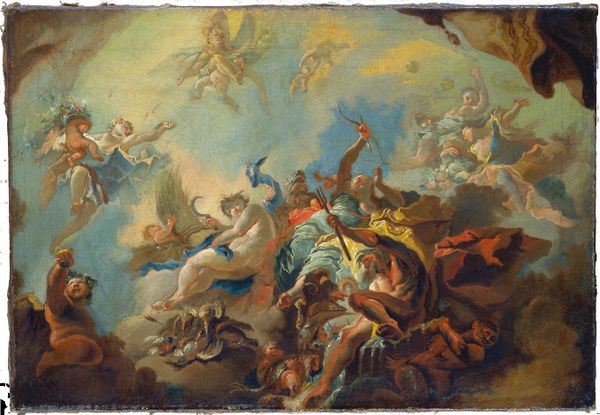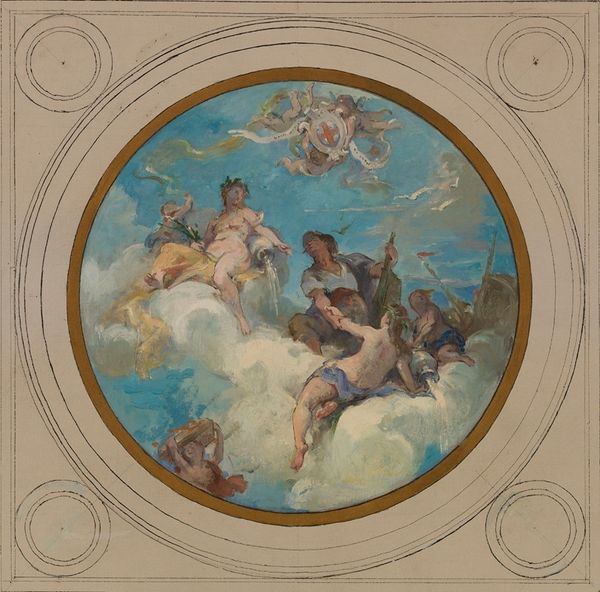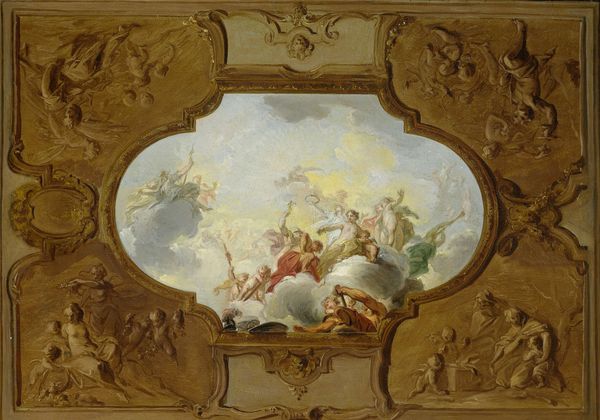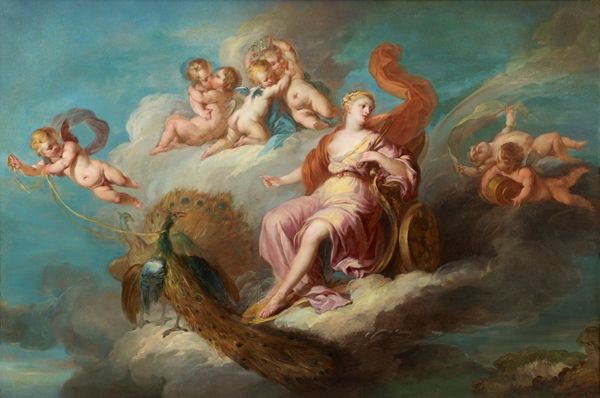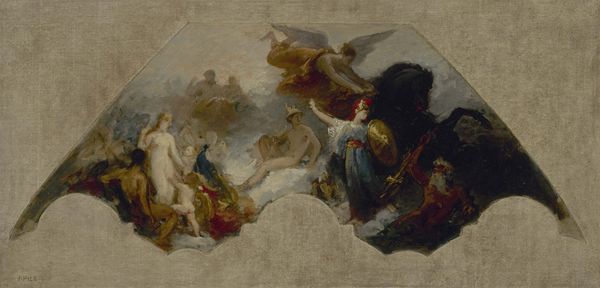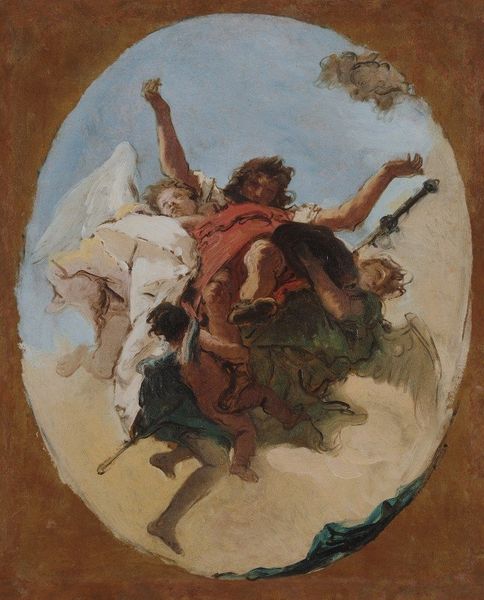
Copyright: Public Domain: Artvee
Curator: This is Henryk Siemiradzki’s “Aurora, plafond project,” dating back to around 1886. Note how Siemiradzki uses oil paint to capture this allegorical scene with figures and vibrant storytelling, seemingly ready for placement on a grandiose ceiling. Editor: My first impression is that it's… dreamy, almost aggressively so. The pastel palette and the swirling brushstrokes create this ethereal atmosphere, like a glimpse into a mythic realm. It’s not necessarily a serene dream, though; there's a dynamism in the composition, a feeling of constant movement. Curator: I agree, the dynamism certainly mirrors its historical context within late 19th-century academic painting, during which artists explored classical subjects with a renewed emphasis on dramatic effect. Considering the sociopolitical climate of partitioned Poland under Russian rule, the artist might have been invoking the hope symbolized in the dawn after a long, dark night, particularly given the figure of Aurora as a bringer of hope and promise. Editor: Absolutely. Looking at the arrangement of the figures, the upward thrust of Aurora and her horses against the reclining figures below... it’s an ascension, isn’t it? The lighter colors above contrasted with the darker earthier tones at the bottom work in conjunction to reinforce this sentiment of spiritual rising. The light catches every muscle in those horses! Curator: Consider also the inclusion of the rooster, an ancient symbol linked to the coming dawn and new beginnings—the artist skillfully employs these allegorical elements to enrich his narrative and possibly instilling patriotic sentiments in a subtle visual language of resurgence and resilience. How does the composition lead you to see this narrative expressed from your angle? Editor: Well, dissecting the composition structurally, that diagonal line established by Aurora's chariot splits the canvas. The earthly realm with its muted palette occupies the lower half, full of figures with what appears to be classical aesthetic qualities—and is separated from this more airy, idealized realm above through contrasting chromatic choices, as we've mentioned. Siemiradzki guides our eye heavenward to something new and perhaps more glorious through light, color, and symbolic orientation. Curator: Indeed, viewing “Aurora, plafond project” through a multifaceted lens reveals how intertwined artistic expression can be with socio-political aspirations. The artist encourages us to consider history, myth, and the enduring human hope for liberation and better days. Editor: From a formal perspective, focusing on brushstrokes, the mastery lies in rendering these ephemeral figures and creatures through pure painterly effect. These visual choices heighten our sensory perception of beauty, even grace within this optimistic promise represented through Siemiradzki’s unique visual idiom.
Comments
No comments
Be the first to comment and join the conversation on the ultimate creative platform.
